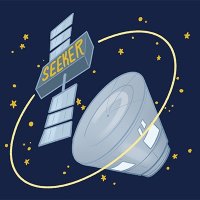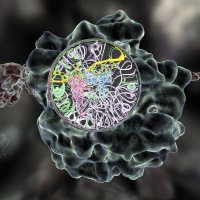A UT Austin Spin-Out Beats the Odds, Turning Data into Knowledge
Submitted by Anonymous on
Submitted by Anonymous on
Submitted by Anonymous on
Computer scientists at The University of Texas at Austin have taught an artificial intelligence agent how to do something that usually only humans can do—take a few quick glimpses around and infer its whole environment, a skill necessary for the development of effective search-and-rescue robots that one day can improve the effectiveness of dangerous missions.
Submitted by Staci R Norman on
Is my code fast? Can it be faster? Scientific computing, machine learning, and data science are about solving problems that are compute intensive. Choosing the right algorithm, extracting parallelism at various levels, and amortizing the cost of data movement are vital to achieving scalable speedup and high performance.
Submitted by Anonymous on
Submitted by Anonymous on

Photo Credit: Lauren Ibanez | Daily Texan Staff
Daily Texan | By: Rahi Dakwala
A navigating software developed by UT students for a NASA satellite is launching today with a resupply mission to the International Space Station.
Submitted by Angelica Lopez on
Water, sunlight, nutrients—these ingredients are essential for plant growth. However, these basic ingredients don’t always yield the ideal plant. In fact, optimizing these variables is complicated, causing some plants to fall flat on flavor.
Machine learning can help.
Submitted by Angelica Lopez on
Texas Computer Science assistant professors Qiang Liu, Philipp Krähenbühl, and Christopher Rossbach were selected for the National Science Foundation’s CAREER Award. This is the most prestigious award in support of early-career faculty.
Submitted by Angelica Lopez on
Imagine a world where accessing and interacting with technology doesn’t require keyboard or voice input—just a quick mental command.
Imagine “speech prosthesis” technology that would allow people who are unable to communicate verbally to speak without expensive and highly customized interfaces. Imagine a device that could read a users’ mind, and automatically send a message, open a door, or buy a birthday present for a family member.
Submitted by Angelica Lopez on
On Thu, 4 Apr 2019, the UT Programming Contest (UTPC) team competed at the International Collegiate Programming Contest (ICPC) World Finals at the University of Porto in Porto, Portugal.
The competition consisted of teams from 135 regions (approx. 405 students) trying to solve 11 problems in 5 hrs. The first-place team, Moscow State University, solved 10 problems.
Submitted by Tracy Zhang on

A merged multi-scale structurally valid visualization of the ribosome; the green volume occupying model and the tertiary and secondary structural model is obtained from reconstructed single particle cryo-electron microscopy, while the atomic-resolution structures is from X-ray crystallography resolved models.
Gene-editing or genome engineering is the altering of DNA within a living organism. Once believed to be far-fetched and unthinkable, it is becoming more and more common due to scientific breakthrough techniques like CRISPR. What most people don’t know though is the use of computing tools in conjunction with CRISPR make gene-editing as efficient and mistake-free as possible—making it a viable cure to deadly genetic diseases.